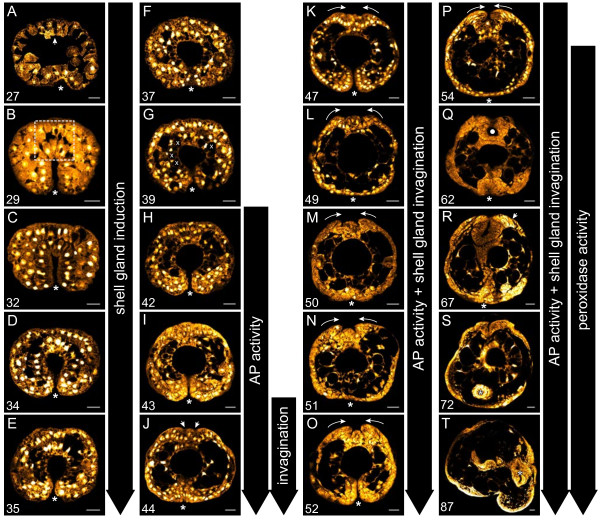Figure 2.
Early shell development in L. stagnalis illustrated by Confocal Laser Scanning Microscopy (CSLM). A-F During the course of gastrulation the initial invagination of the blastopore (asterisks) deepens to form the archenteron. The initial contact between dorsal ectoderm and endoderm is loose and is characterised by cellular projections (boxed region in B). G-I Upon contact, ectoderm and endoderm display signs of differentiation: the dorsal ectodermal cells at the contact zone differentiate into highly columnar shell field cells, and the endodermal cells are characterised by a lack of large vacuoles which are present in adjacent endodermal cells (indicated in G by white “x”s). J-R The initial bilateral invagination of the shell gland is visible in J (arrows). During this invagination the margins of the shell gland begin to converge (curved arrows in K to P). By 62 hpfc the non-invaginated margins of the shell gland have converged and form a closed lumen (white dot in Q). By 67 hpfc cells at the shell gland margin are highly elongated (arrow in R). Embryos in A-S are oriented with the shell field to the top and the veliger in T is oriented with the shell field to the left. An asterisk marks the position of the blastopore. Panels A-P are transverse optical sections and Panels Q-T are sagittal optical sections. All scale bars are 20 μm. Numbers in the lower left of each panel indicate the age in hours post first cleavage (hpfc).

